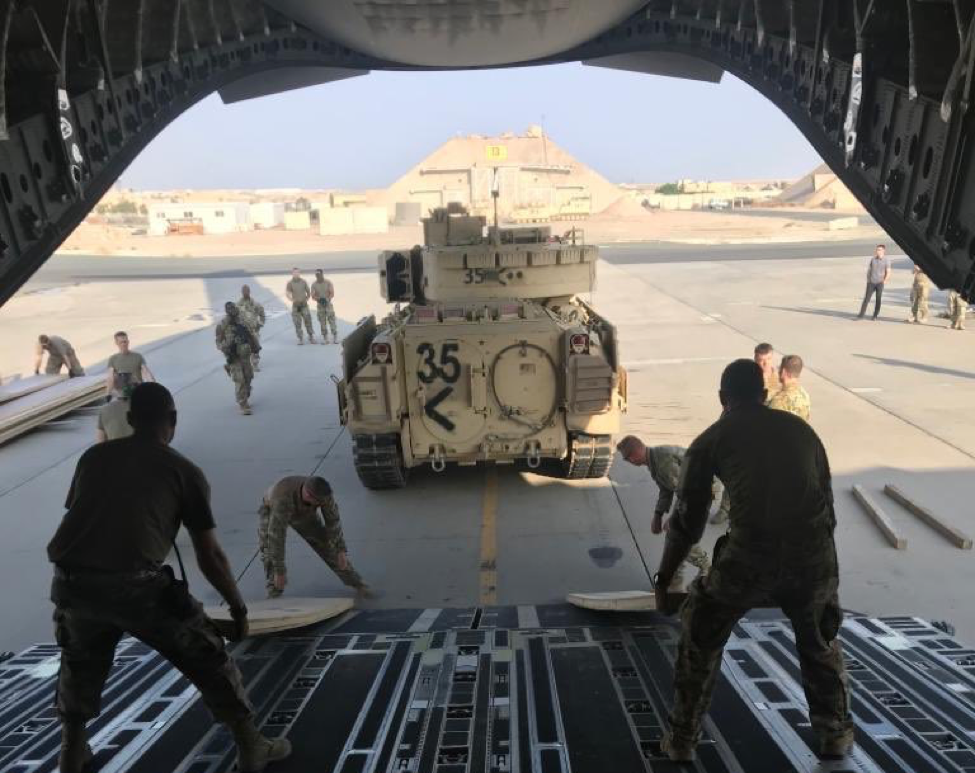Late in October, approximately 500 US troops of the 30th Armored Brigade Combat Team (ABCT) entered eastern Syria to secure oil fields. This confusingly occurred just after US forces announced a withdrawal from Syria. While the US policy in Syria is its own question, this episode also brought the role of the reserves (briefly) into the spotlight. The 30th ABCT is a National Guard formation, mobilized as the rotational ABCT in Kuwait and, thus, was the only armored force the Army had in theater (which by itself says something about the role of the reserves). This event is indicative of a larger problem: the current use of reserve forces to substitute for day-to-day gaps in active capability is not a logical force posture.
The Reserve Component (RC) primarily consists of 818,000 personnel split across the four reserve forces and the two National Guard forces. Unlike the active-duty forces, reserve forces are not full-time, only “drilling” periodically (plus additional non-drilling, inactive reservists). These forces traditionally served as the strategic reserve for military forces, supplementing active-duty forces when mobilized but normally maintaining lower readiness levels.
The RC serves this role primarily because it is a much less expensive than comparable active duty units, being paid only about 62 days a year (about 15% of active duty pay) with lesser benefits. However, recently, the US has utilized the RC instead as an operational, not strategic, reserve, supplementing active duty forces on a day-to-day basis. As a point of comparison, reserve support in the Cold War era averaged less than one million days of duty per year but by 2003 the RC was providing 63 million days of duty per year. While this is largely a result of policy decisions and financial constraints associated with the “Global War on Terror,” the role of the RC has not been seriously considered and its structure has not been realigned to reflect changes in its operational role.
Reservists are provided basic training opportunities and maintain the ability to mobilize in a relatively short time period. However, these forces suffer from obvious readiness gaps, since they are part-time and their intermittent training opportunities prevents sustained unit-level readiness. Additionally, a variety of administrative, statutory, and cultural factors make integration with active duty forces difficult, at best, further limiting their readiness.
Given these limitations, how can the RC best integrate into the overall defense strategy? Wholesale structural changes to the RC are unlikely in the near term. However, there are broad areas where the RC can effectively support defense priorities within the current structural constraints, by providing capacity as a strategic reserve, providing capabilities not needed on a daily basis, and leveraging unique individual skills RC members possess.
First, the RC should prioritize its role as a strategic reserve. Some number of reserve combat units should be maintained in lower readiness conditions, as intended, able to spin up relatively quickly in the event of a major war and to reconstitute losses from a major conflict. This is the traditional role of a reserve force, and backfilling active units engaged in the early stages of conflict is vital for long-term resiliency.
Second, the RC can maintain capabilities not required on a day-to-day basis. Units as varied as chemical weapons troops, logistics, riverine forces, and civil affairs are not needed on day one of a conflict, but may be needed at some point. The RC can add value by focusing on those mission sets where the time to mobilize a reserve unit is not a negative.
Lastly, the RC can focus on employing the individual skills its members possess, augmenting active units in a conflict, especially in areas where existing day-to-day capacity may not be sufficient. Many prior service members have significant military experience and are well positioned to augment staffs or supplement understrength active duty units. Additionally, many reservists have civilian careers in medical, logistics, and law enforcement, skills that transfer into military roles with minimal retraining.
Our current use of the reserves results from a strategic mismatch between resources and missions that is unlikely to be resolved anytime soon. While fully shifting to an operational reserve model is a possible policy choice, a true operational reserve would come with increased costs, thereby reducing the primary benefit of the RC. There is no realistic policy discussion on dramatically shifting the reserves from the legacy strategic reserve structure. Instead, living within the current structure, the RC can add value in the areas discussed above, supplementing active duty forces in key areas without seeking to carry out active duty missions.
Joe Petrucelli is a Ph.D. student in Political Science at George Mason University’s Schar School of Policy and Government. He previously served on active duty as a submarine officer and currently serves as a Naval Reserve officer and is employed as a civilian defense analyst. His research interests include naval doctrine, defense policy, and deterrence. The opinions expressed here are his own, and do not represent the positions of his employer, the US Navy, or the Department of Defense.
Photo can be found here.




